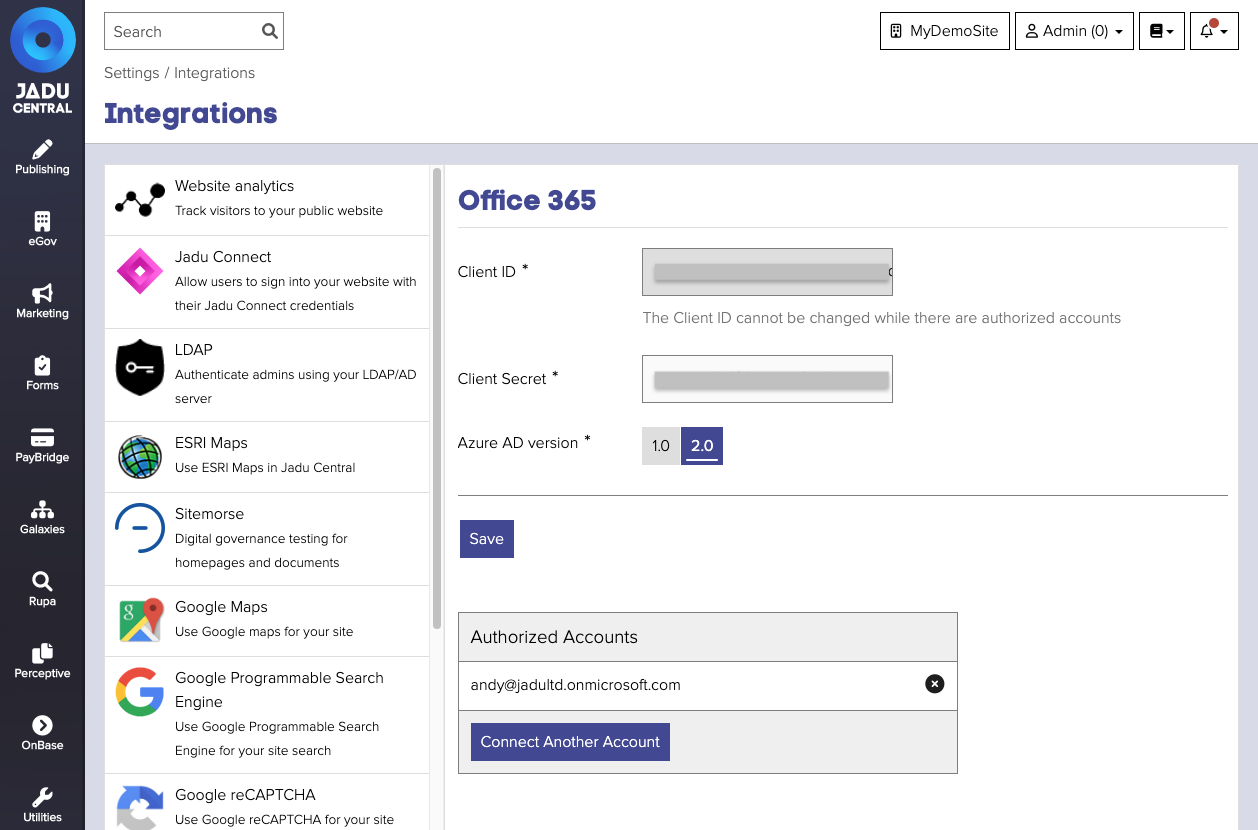Office 365
Authorise a Microsoft Office 365 account for use with Jadu Central event bookings, or your own in-house functionality.
Navigating to the Office 365 area
- Click the Settings icon in the left navigation bar. The Settings menu will open.
- Click the Integrations link in the first group of links. A list of integrations will now be shown.
- Click the Office 365 option in the list of integrations. The Office 365 integration form will open.

Integration elements
The integration consists of:
- an Event Booking form component to present customers with a calendar from which they can select a time slot
- an Event Booking form component to present customers with a dropdown of their confirmed future bookings
- a Flexible Event Booking form component to present customers with a calendar from which they can select a time slot
- a Flexible Event Booking form component to present customers with a dropdown of their confirmed future bookings
- a Flexible Event Booking form component to present customers with a pricing summary of their bookings
- a form action to move a booking
- a form action to delete a booking
- a form action to amend booking details
- form actions to move, delete and amend Flexible Event Bookings
To configure the Office 365 integration
- Navigate the Office 365 management area
- Set the Azure AD version to Graph. Click the Save button to save your changes.
- Click the Connect Account button. Complete the Microsoft authentication process, and accept permissions requested. Once the process is complete, the authorized account will be shown in the list and your service will be restored.
To authorise an Office 365 account
- Sign into Office 365
- Navigate the Office 365 management area in Jadu Central and click the Connect account button
- After the page refreshes, the email address of the Office365 account you are currently logged into will be added to the authorised accounts list.
note
Outbound connectivity from the server through your firewall will be necessary to login.microsoftonline.com, outlook.office365.com on port 443.
To un-authorise an Office 365 account
- Sign into Office 365
- Navigate the Office 365 management area in Jadu Central and click the cross icon next to the account email address in the list. A new form will open.
- Click the Remove button